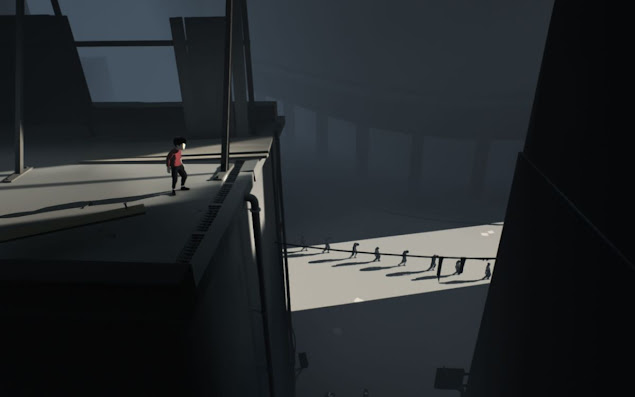Beyond 2D & 3D: Exploring the Frontiers of Volumetric Animation
For decades, animation has captivated audiences with its ability to bring characters and worlds to life. From the hand-drawn magic of 2D animation to the immersive worlds of 3D computer graphics, animation has constantly evolved alongside technological advancements. But now, a new frontier is emerging: volumetric animation. This revolutionary technology promises to transform the way we create and experience animation, pushing the boundaries of what's possible.
Breaking Free From Flat Planes
Traditional 2D animation brings characters to life through a series of meticulously crafted drawings, creating the illusion of movement on a flat plane. 3D animation, on the other hand, utilizes computer software to build 3D models of characters and environments, allowing for greater depth and realism. However, both methods have limitations. 2D animation is inherently limited by its flat nature, and 3D animation, while offering depth, can still feel rigid at times.
Volumetric animation offers a solution. Imagine capturing the essence of a character or object not just as a series of images or a 3D model, but as a complete volume of data. This data captures not just the surface details but also the interior information, allowing for a more nuanced and realistic representation.
How Does it Work?
There are different approaches to volumetric capture. One method involves capturing real-world objects or actors using specialized camera rigs that record data from multiple angles simultaneously. This data is then processed to create a 3D volumetric model. Another method involves creating volumetric models entirely within a computer software environment, allowing for the creation of fantastical creatures or objects that wouldn't exist in the real world.
Pushing the Boundaries of Storytelling
Volumetric animation holds immense potential for the future of animation. Here are some exciting possibilities:
Enhanced Realism: Volumetric characters can be captured with incredible detail, including subtle nuances of movement and expression that are difficult to achieve with traditional methods. Studios like Tenfold Animation are exploring this technology to create characters that feel more lifelike and emotionally engaging.
Freer Camera Movement: Unlike traditional 3D animation, volumetric models can be viewed from any angle, allowing for dynamic camera movements and a more immersive viewing experience. Imagine scenes where the camera can seamlessly rotate around a character, capturing their full presence.
New Storytelling Opportunities: Volumetric animation opens doors to innovative storytelling techniques. Imagine being able to seamlessly transition between live-action footage and volumetrically animated characters, blurring the lines between reality and animation.
Challenges and the Road Ahead
Volumetric animation is still a relatively new technology, and there are challenges to overcome. The file sizes for volumetric data can be enormous, requiring powerful computers for processing and playback. Additionally, creating and animating volumetric characters requires specialized skills and workflows.
However, as technology advances and software tools become more sophisticated, these challenges are being addressed. The future of volumetric animation is bright, with the potential to revolutionize animation production and storytelling.
A Glimpse into the Future of Animation
Volumetric animation represents a significant leap forward in the world of animation. By capturing the essence of characters and objects in volumetric data, this technology offers the potential for unparalleled realism, flexibility, and storytelling possibilities. As the technology matures and becomes more accessible, we can expect to see volumetric animation becoming a mainstay in animation studios, pushing the boundaries of what's possible and creating even more captivating experiences for audiences.
The Power of Collaboration: Merging Techniques for a Richer Experience
Volumetric animation is a powerful tool, but it's important to remember that it's not a replacement for existing animation techniques. The future of Tenfold animation likely lies in a collaborative approach, where studios leverage the strengths of different methods to create truly unique and visually stunning experiences.
Here's how volumetric animation can be combined with other techniques:
Blending with 2D and 3D Animation:
Volumetric characters could be seamlessly integrated into traditionally animated worlds, adding depth and realism to specific elements. Imagine a hand-drawn animated scene where a volumetrically captured character walks through, creating a striking visual contrast.
Enhanced Lighting and Effects:
Volumetric data can be used to create more realistic lighting effects on characters and objects. This can be combined with traditional 2D and 3D animation techniques to create a visually cohesive and immersive experience.
The Power of Storytelling:
Ultimately, the true power of any animation technique lies in its ability to serve the story. Volumetric animation should be used strategically to enhance specific scenes or characters, while other techniques may be better suited for other parts of the narrative.
A New Era of Artistic Exploration
The emergence of volumetric animation signifies a new era of artistic exploration for animators. This technology opens doors to innovative character design, lighting techniques, and storytelling methods. Studios that embrace this new frontier, while still valuing traditional artistic skills, will be the ones who push the boundaries of animation and create truly captivating experiences for audiences.
Conclusion
In conclusion, volumetric animation is a groundbreaking technology with the potential to revolutionize the animation industry. While challenges remain, the future holds immense promise. By embracing collaboration with existing techniques and fostering artistic exploration, volumetric animation can usher in a new era of storytelling and visual magic in the world of animation.





Comments
Post a Comment